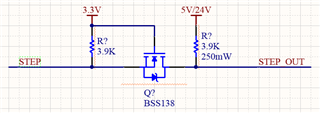Other Parts Discussed in Thread: AM26LV32E, THVD2450, THVD1450, AM26LV31E, THS6222, SN74LVC3G34, SN74LXC2T45, UCC27537
Hi All,
First, I'm not sure if this is the right area to ask these questions, but here it goes. I am designing a higher-end motion control board and looking for a reliable, robust way to interface to external stepper motor controllers such as Stepper Online DM556T or TB6600 or any other external stepper motor driver with optoisolator inputs for pulse, direction, and enable and some have an alarm output. Can I use the AM26C31 device to send the necessary signals differentially, or is single-ended preferred? I want to use differential because of the outside noise and high voltage from a high voltage C02 laser power supply, AC noise, and other noise sources such as VFDs etc.
My requirements are three differential outputs and one differential input on my board per axis up to nine axes of control. I am turned off by single-ended signals, especially at high step rates. If I go down the differential path, can I put the line termination resistors on the PCB, or do they REALLY have to be at the end of the transmission line? Since this is driving an optoisolator inside the external stepper motor driver, I want something easy for the customer to hook up.
The maximum speed of the step pulse signals would be 0-1 MHz step frequency with a pulse width of 1-10 uS. Direction and enable signals aren't very fast. Max cable length is up to three feet (1 meter) maximum with twisted pair of 100 ohms.
What would you recommend I do? I also want the differential line drivers/receivers to be robust and have ESD protection. It would be great if you could share part numbers and example schematics.
Thanks,
Eric Norton


